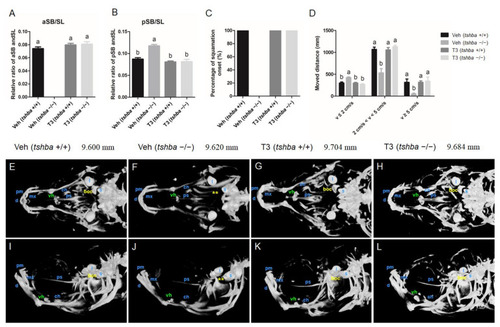Figure 4
- ID
- ZDB-FIG-210902-187
- Publication
- Song et al., 2021 - Functions of the Thyroid-Stimulating Hormone on Key Developmental Features Revealed in a Series of Zebrafish Dyshormonogenesis Models
- Other Figures
- All Figure Page
- Back to All Figure Page
|
Larval-to-juvenile transition defects rescued by supplemental T3 treatments in |
| Fish: | |
|---|---|
| Condition: | |
| Observed In: | |
| Stage Range: | Days 14-20 to Days 30-44 |

